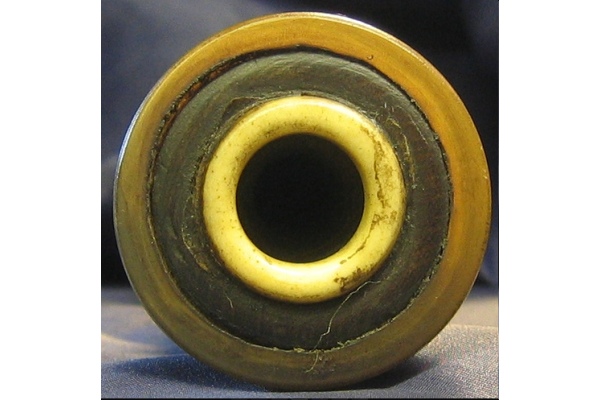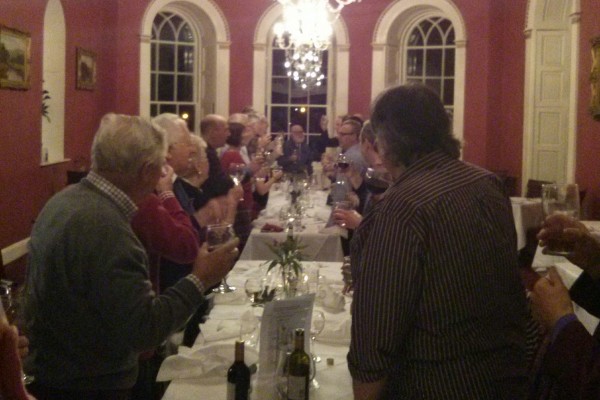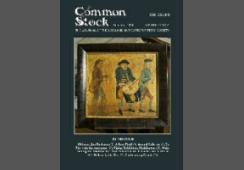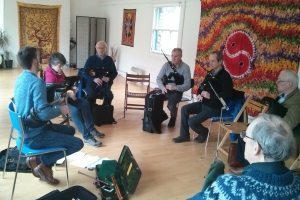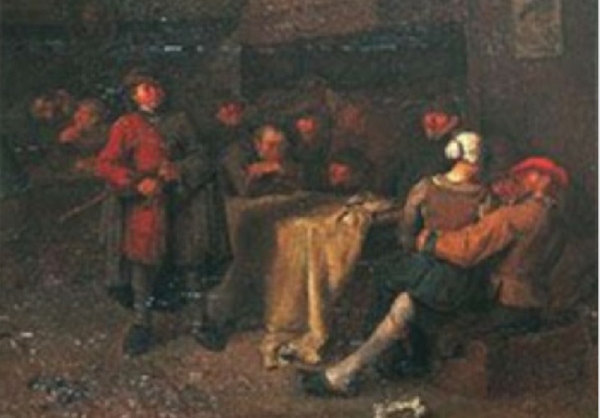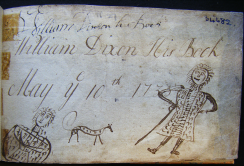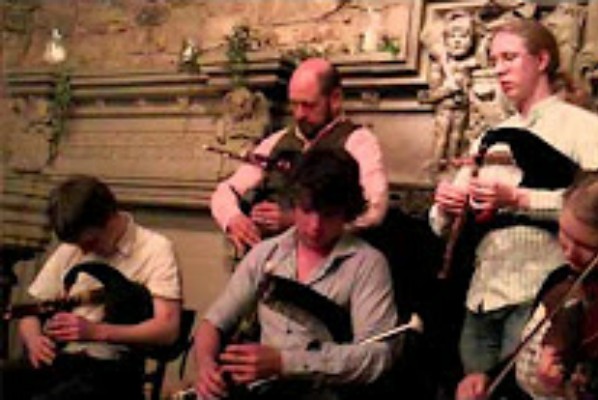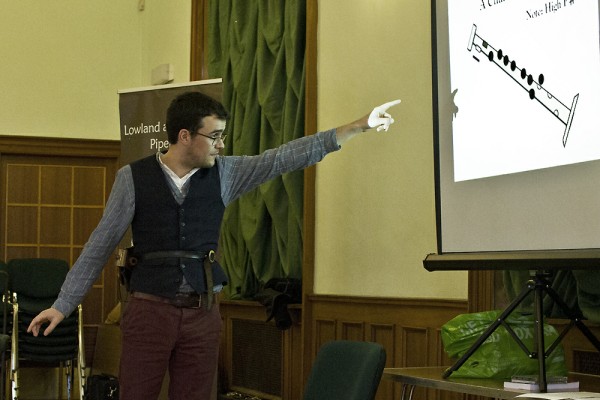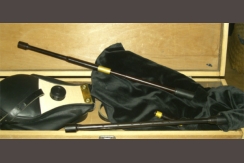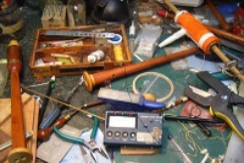Keith Sanger offers some suggestions on where to look.
Pete Stewart’s article in the June ‘Common Stock’ covered a lot of ground while posing numerous questions. One comment in particular which did catch my attention was the statement that ‘There does appear to have been two separate traditions of small pipes, one Italian/French and the other German/Dutch, the first of these had bellows from the mid 16th century onwards, though not universally’. As a generalisation that statement may well be true, but it also implies some neat and definable geographical ‘boxes’, when it is the grey areas that are usually more interesting.
In this case the relevant ‘grey area’ is where those two language groups overlapped, that much fought over part of the continent of Europe historically known as the ‘Low Countries’, more specifically the part now called Belgium. Scottish soldiers both as mercenaries or officially sanctioned by the Crown, were frequently involved in the various wars in those parts and it is through the returning soldiers from those continental wars that the Swiss military drum was first introduced to Scotland where it was originally called a ‘swishe’ and the Burgh drummers were known as swischers or swescherman.1
However, although the transfer of musical technology like the use of bellows rather than mouth blown bagpipes through military contacts cannot be discounted, especially with an instrument that in any case had its own military use; the most likely routes were social and trade. The social contacts started right at the top at the royal courts, where Mary Queen of Scots was raised in France while her mother was actually French. This is an area still to be fully explored since the Despences De La Maison Royale (General Accounts of their Scottish Household Expenditure), for both ladies, as the title suggests were kept in French.
In terms of piping they have not been systematically searched but there are at least three records (one in 1562 and two in 1563), of payments to a piper.2 As the payments are recorded in French the pipers are noted as ‘cornemuzeux’ so it is unclear if they came from France with the Queen or were local pipers attached to her staff. Probably the latter since the tendency to use a translated term if the document is not in Scots can also be seen in Glasgow where the two Burgh pipers, John Cuthbert and Archibald Bordland also turn up as witnesses in the Glasgow Protocol Books for 1585 and 1586, but as those legal books were still kept in Latin are noted as ‘utriculatore’.3
Moving on down the social scale the largest number of peacetime contacts with the ‘Low Countries’ would have been at the merchant level. It was the standard practice to send a member of the family to
live at the destination of the exports, which tended to be bulk raw materials like wool, skins and salted fish. The returning ships carried finished high value cargoes which took up less space on board so they often also carried saleable ‘ballast’, like the Dutch origin red roof tiles still common in the older buildings in the East coast towns, (along with a Dutch influence on the architecture).
The practice also operated in reverse with the merchants in the Low Countries having family members in Scotland to represent their interests and as one of the larger ports, Leith became the home for many of those merchants along with their families. In some cases while in Scotland they intermarried and the birth and marriage records for Leith show that just as there was a ‘grey area’ of linguistic merging of the Italian/French and German/Dutch cultures in the Low Countries it was also happening here.
On the 29 March 1603 in Leith the birth of a son called Antonious to Palamedes Steven alias Wm Sown and Maria van Narsen was witnessed by Wm van Narsen,5
Jaques le piper and James Hay.4 On the 3 July the following year Jaques Le piper married Elysabet van Naersen and on the 26 May 1605 Jaques le pipre and Elizabeth van Arsen baptised a son called Peter6 and again on the 12 April 1607 Jakes La pipere and Elizabet van Arsone baptised a daughter called Sophia.7 (all spellings of names as per the original records). Clearly by this time ‘Jakes’ had been around Leith long enough for his forename to become Scottified but, the original form along with ‘Le or La piper or pipere’ indicate he was of French speaking origin while his wife bore a German/Dutch name. (The modern Dutch form is ‘Van Aarsen’).
It would need more evidence to suggest that Jaques le piper was a practising musician but, as his own birth must date back into the previous century and closer still to the time when occupational surnames often still indicated the trade of its user; if he was not then a close ancestor clearly had been.
There is however some element of doubt surrounding what appears to be another but later, French piper in Scotland. His name was Patrick Rogard and he served James Drummond (1713-1746), the sixth Earl (and titular Duke) of Perth. The family were Jacobites and the estate had fortuitously been made over to the earl when a child by his father before the failure of the 1715 rising. James and his younger brother John were initially brought up at Drummond Castle by their mother, but at the death in exile of their father in 1720, the two boys were sent to the Scots College at Douai in France. James Drummond returned to his estate in the 1730’s and may have brought the piper with him.
True to form the Earl and his brother John were both on the Jacobite side again in 1745 but it is from the forfeited estate papers following that rising that the details of the piper emerge. The first move by the Commissioners for the Forfeited estates was to set up a Judicial Rental to find out what they had got, and in this case it was undertaken in 1747. According to that record Patrick Rogard, piper in Crieff produced a Feu Charter granted to him by James Drummond on the 23rd December 1738, for a piece of ground consisting of Forty two falls8 lying and bounded as in the said Charter for the yearly feu duty of Two pounds four shillings Scots and to relieve the superior of the cess and other public burdens.9
Apart from his charter the piper also produced a Discharge (receipt), signed by the Earl’s Chamberlain, John Steuart, dated 4 January 1745 for the feu duty due at martinmas 1744. The Judicial Rental noted that both the charter and discharge were returned to the piper Patrick Rogard. It seems clear that the piper had taken no part in the late rising which may indicate that the nature of the pipes he played did not fit with military activity. Certainly Patrick Rogard’s patron, the Duke of Perth’s regiment had at least one piper, Robert Jamieson a Border piper from Annandale.10
While the Perth estate was still under administration a second Judicial Rental was undertaken on the 2 September 1755.11 Patrick Rogard again produced his charter and confirmed its details, however on this occasion he is not described as a piper although he was certainly the same man as his signature was identical on both occasions. Presumably now lacking his original patron he had reverted to just a tenant under the Forfieted Estate Commissioners. Again among the Forfeited Estate papers he appears among two lists, one dated 1748, of payments by Feuars in Creiff as Patrick Rogard Piper.12 From these records it would seem possible that for a period of at least seventeen years the inhabitants of Crieff would have been familiar with a French piper probably playing a musette or similar small pipe.
However there is a problem which appears in the first Judicial Rental where the piper is initially described by its writer as Patrick Rodgie, albeit that the piper signs it in a very clear and competent hand as Patrick Rogard. Rodgie on the other hand is a diminutive in Scotland of the name Rogers and in some cases was, following its pronunciation, written phonetically as Rogie.13 Since the second Judicial Rental of 1755, which was to some extent based on the earlier one of 1747 does not repeat ‘Rodgie’ but gives Rogard it leaves little doubt given the piper’s literate hand that Rogard was his name. The problem mainly arises from a number of entries in the contemporary baptism records which do use the form Rogie.
Over the period from 1731 to 1753 the piper appears to have sired eleven children. The first child recorded was James born on the 21 November 1731 which could be significant as the child may have been named for the pipers patron James Drummond, who on his return to Scotland from France had received a Great Seal Charter dated 12 February 173114 for his lands and confirming him as Earl of Perth .15 Coincidentally this is just over nine months prior to the child’s birth and if the piper had come from France with his patron then it fits as if there had been any previous children only the first to be born in Scotland would appear in these records.
The next child was a daughter followed by another son, this time named ‘Pate’, the same contraction of Patrick initially also used for the pipers forename in these baptismal records. However in 1739 and for the following two entries the piper’s forename is given as ‘Peter’, as well as another son also named Peter.16 But the pipers forename returns to Pate for the child baptised on the 3 May 1746, although the child’s name is not given, possibly not having lived long enough to be named or else a reflection of that troubled period.
Of course it was after that period the piper lost his patron when the estate was forfeited and although the Judicial Rental taken in 1747 still described him as a piper it is interesting to note that in the entries for his remaining two children born in June 1748 and August 1750 he is described as Pate Rogie violer in Crieff. Perhaps a reflection that his instrument and style of music did not attract those who unlike the Earl had not acquired a taste for French music. However by the birth of his last recorded child in 1753 his description had returned to ‘piper’ while in the second Judicial Rental of 1755, although that one gives his name as Patrick Rogard he appears just as a normal tenant with no further description.
In summary Scotland had always been in direct contact with the rest of Europe and there were numerous avenues of musical borrowings. In terms of piping the evidence suggests that even as late as the 18th C, the French raised Earl of Drummond had returned home with a French piper whose surname name was substituted by a colloquially similar local form. A process which seems to have continued with his descendents where on an 1822 town plan of Crieff which names the possessors of the various properties;17 two people with the surname now given as ‘Rodger’, a William and Alexander appear to occupy a half each of the pipers original forty-two Fall holding.18 Indeed it is possible that this William was the pipers son of that name who was born in 1748 and so would have been about 73-74 years old depending on how long before publication the town plan had actually been surveyed.
1. Dictionary of the Older Scottish Tongue, first recorded use in 1524 and continued in use to 1677. 2. National Records of Scotland (NRS), E33/8/21r and E34/28/2/8 3. Renwick, Robert. Protocols of the Town Clerks of Glasgow; Other examples include a Glasgow Sasine dated 25 January 1587-8 ‘done beside a house occupied by Fergus Neilsone piper’, who was also listed as a witness where ‘utricularius’ was used for ‘piper’, (NRS RH6/2944) and again in October 1587 in Kirkcudbright where a witness noted as Andrew Tait piper used utricularius, (NRS RH6/2931). There are enough examples of the words use to suggest that it was, with some slight fluctuations in spelling, the usual translation for ‘piper’ in the Latin documents of that period. 4. OPR 692/2 10 45 Leith South 5. OPR 692/2 90 205 Leith South 6. OPR 692/2 10 76 Leith South 7. OPR 692/2 10 94 Leith South 8. In the Scots land measures there were 40 [square] Falls to 1 square Rood and 4 Roods to 1 Acre. So the piper’s land would have extended to a little over a quarter of a Scots acre. In many such charters dealing with pieces of land the fact that the measuremnts given would be squared was taken for granted and not explicitally stated. 9. NRS E777/2/351 10. Seton, B.G and Arnot, J.G, Prisoners of the ’45. Edited from the state papers. Scottish History Society. Series 3. Vol 14, page 30 11. NRS E777/70/408 12. NRS E777/2/510 and E777/3/47 13. Black, G F. The Surnames of Scotland (1946). page 697. 14. OPR Births 342/1017 Crieff. 15. NRS GD160/532 16. Having more than one child with the same forename was quite common, either due to naming patterns following both the father and mother’s side of the families or due to an earlier child having died. The names Patrick, Pate and Peter were interchangable. 17. Wood, John. Plan of the Town of Crieff from actual survey. Published Edinburgh. 1822 18. https://maps.nls.uk/vw/74400016 My thanks to Michael Billinge and his land surveying skills for identifying that the combined properties held by Wm and Alexander Rodger would have matched the older 42 [square] Falls measurement. Although a row of later houses have been built over part of the property, the original boundaries can still be identified. At the junction of Duchlage Road and Addison Terrace the front of the three cottages facing the opening of Pittenzie Street, probably on the footprint of the buildings marked on the 1822 map, form the eastern boundary, while Addison Terrace, a much later road follows the line of the northern boundary. To the south the boundary is marked by the wall of a tarmacked school playground covering an area that was formerly known as ‘Holy Land’ and the boundary fence at the end of the later row of houses forming Duchlage Terrace is on the line of the western boundary.
Keith Sanger, 2 October 2019
